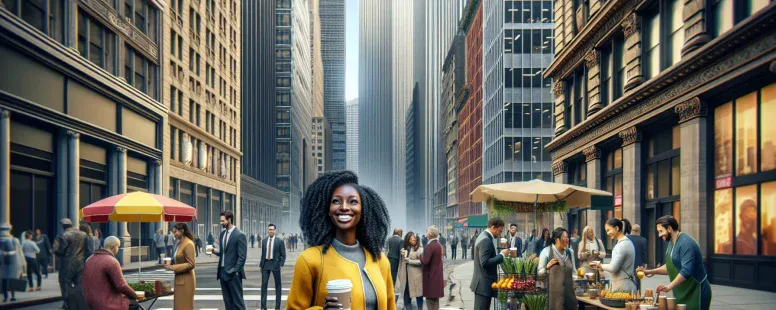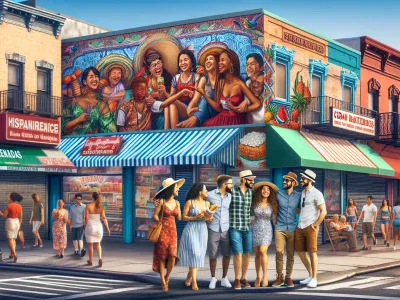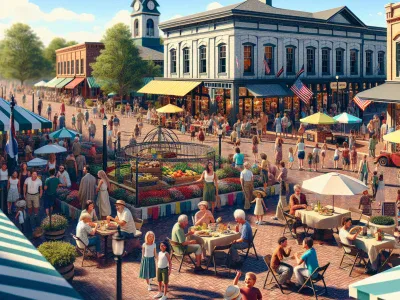Town vs City Definition: Key Differences in Lifestyle, Culture, and Infrastructure Explained
Picture a place where life moves at a gentle pace, neighbors know your name, and the skyline is dotted with cozy rooftops. Now, picture towering buildings piercing the clouds, streets alive with endless energy, and opportunities waiting around every corner. These contrasting images capture the essence of towns and cities—two distinct worlds that shape how we live, work, and connect.
But what truly sets a town apart from a city? Is it just about population size or something deeper—like culture, lifestyle, or accessibility? Understanding these differences isn’t just fascinating; it can help you decide where you feel most at home or even guide critical decisions about relocation. Whether you’re drawn to the charm of close-knit communities or the thrill of urban hustle, exploring this topic reveals much more than meets the eye.
Understanding Town Vs City
Towns and cities have distinct characteristics that differentiate them. These distinctions provide insights into population, governance, and functionality.
What Defines A Town?
A town typically features a smaller population compared to a city. Populations in towns often range from a few hundred to tens of thousands, depending on the country or region. For example, in the United States, a town might encompass 1,000 to 20,000 residents.
Governance structures tend to be less complex in towns. Towns usually have local councils or boards responsible for basic administrative duties like zoning regulations or public services. The absence of metropolitan-scale infrastructure is common.
Economic activities focus on small businesses and local industries. With limited commercial hubs, towns mainly serve as residential areas with essential amenities like schools or community centers.
Social interactions in towns are more intimate due to their size and slower pace of life. You might notice stronger communal ties where neighbors know each other well.
What Defines A City?
Cities are defined by larger populations exceeding those of towns—often surpassing 100,000 people globally but varying based on national standards. Metropolitan areas such as New York City house millions.
Governance systems include mayors’ offices and extensive municipal departments managing urban planning, transportation networks, healthcare facilities, and law enforcement at scale.
Economic infrastructures support diverse sectors like finance, technology manufacturing tourism retail operations etcetera. Cities act as economic powerhouses with global connections driving innovation competition growth opportunities simultaneously shaping regional identity trends migration patterns within it’s vast boundaries..
Key Differences Between Towns And Cities
Towns and cities differ significantly in size, governance, and infrastructure. These distinctions shape the daily lives of their residents.
Population Size And Density
A town’s population usually ranges from a few hundred to tens of thousands, while city populations often exceed 100,000. Towns typically have lower population density, resulting in more open spaces and quieter neighborhoods. In contrast, cities are densely populated, with high-rise buildings and bustling streets accommodating large numbers of people within limited areas.
For instance, compare a small town like Bar Harbor, Maine (population ~5,500), to New York City (~8.5 million). The physical space per person dramatically differs between these two environments.
Governance And Administration
Towns operate under simpler governance structures, managed by local councils or boards that oversee basic services like waste collection and zoning regulations. Decision-making processes are often quicker due to fewer bureaucratic layers.
Cities rely on complex administrative frameworks involving multiple departments handling transportation systems, public safety programs, and housing policies. They also coordinate with state or federal agencies for major projects like subway expansions or disaster management plans.
An example is Los Angeles’ metropolitan government system versus a smaller town council in places such as Jackson Hole, Wyoming; the scope of responsibilities varies enormously between them.
Infrastructure And Amenities
Infrastructure in towns supports essential needs—schools serving local families or hospitals covering regional healthcare requirements. Public transportation options may be limited to buses or community shuttles.
Cities boast extensive amenities like international airports connecting global destinations or advanced medical centers offering specialized care unavailable elsewhere. Entertainment venues—from theaters to sports stadiums—are more common too due to larger audiences they can attract.
Cultural And Social Aspects
Towns and cities differ significantly in cultural and social dynamics, influenced by population size, traditions, and community structures. These differences shape daily life and interactions.
Lifestyle In Towns Vs Cities
Lifestyle in towns often reflects slower-paced living with a focus on close-knit communities. You might find local festivals celebrating regional heritage or farmers’ markets showcasing local produce. Residents typically engage more deeply with nature due to the availability of open spaces and proximity to rural landscapes.
In contrast, urban lifestyles revolve around fast-paced activities driven by diverse opportunities. Cities offer vibrant nightlife, global cuisines, art galleries, theaters, and large-scale events like music festivals or international expos. For instance, living in New York City can mean attending Broadway shows weekly or exploring Central Park amidst skyscrapers.
While towns emphasize simplicity and tradition, cities thrive on multiculturalism and innovation. The cost of living also varies; housing costs are generally lower in towns but rise sharply in metropolitan hubs like Los Angeles or Chicago.
Community And Social Interaction
Community bonds tend to be stronger in towns where fewer people foster familiarity among neighbors. You may know your mail carrier’s name or join communal gatherings at a town hall meeting regularly. Interpersonal relationships often form through schools, churches, or small businesses that act as social hubs.
Cities prioritize networking over personal connections due to their sheer scale. Diverse populations lead to dynamic social groups based on interests rather than geography—for example joining professional meetups through platforms like Meetup.com or engaging with niche cultural communities such as Chinatown districts found worldwide.
While towns excel at fostering intimate ties through shared traditions, cities enable broader exposure to multicultural experiences enriching one’s perspective but sometimes lacking the warmth of tight-knit networks common in smaller settings.
Economic Implications
Economic differences between towns and cities shape employment prospects, business landscapes, and overall financial growth. These factors influence where you might choose to live or invest.
Employment Opportunities
Cities offer diverse job markets driven by industries like technology, finance, healthcare, and entertainment. High population density supports large corporations and multinational companies that provide numerous career paths. For example, New York City hosts leading firms in banking and media sectors.
Towns typically focus on smaller-scale employment opportunities. Local businesses—like family-owned stores or regional manufacturers—play a vital role in sustaining the economy. While fewer jobs exist compared to cities, these roles often foster stronger employer-employee relationships due to close-knit communities.
Remote work trends have blurred some distinctions between town-based and city-based employment. Professionals increasingly relocate from urban centers to quieter towns without sacrificing job opportunities in their chosen fields.
Economic Activities In Towns Vs Cities
Cities drive economic innovation with infrastructure designed for global trade, industrial development, and high consumer activity levels. Advanced transportation networks support exports while attracting international investments; for instance, Los Angeles thrives as a major hub for both shipping ports and creative industries.
Towns prioritize localized economies centered around agriculture, small-scale manufacturing, or seasonal tourism activities (e.g., ski resorts). These economic models promote self-reliance but may limit access to specialized goods or services available only in urban markets.
Global Perspectives On Towns And Cities
Definitions of towns and cities vary significantly across countries, reflecting cultural, administrative, and economic differences. Understanding these distinctions broadens your perspective on how communities function worldwide.
Population-Based Classifications
In many regions, population serves as the key criterion for distinguishing towns from cities. For example, in India, settlements with populations exceeding 100,000 are classified as cities under statutory provisions. Conversely, the UK designates city status through royal charters rather than population size alone; St Davids in Wales holds city status even though housing fewer than 2,000 residents.
Administrative Frameworks
Governance structures also influence definitions. In Japan, a town (machi or chō) has localized governance focused on agricultural or rural services. Meanwhile, “cities” (shi) must meet strict criteria about population density and urban infrastructure. These frameworks highlight that municipal classification isn’t solely tied to demographics but also functional roles within society.
Economic Activity Variations
Economic roles further distinguish towns from cities globally. In Germany’s Mittelstand model, towns often host family-owned businesses driving regional economies while major cities like Berlin anchor international trade networks. Similarly, Canada’s smaller communities depend on natural resource industries compared to its metropolitan hubs dominated by finance and technology sectors.
Social Dynamics Across Cultures
Cultural practices shape social interactions differently in towns versus cities worldwide. You find close-knit community rituals prevalent in Italian hilltop villages like San Gimignano where traditions remain central to daily life contrasting bustling metropolises such as Milan offering diverse global influences yet weaker communal ties.
Conclusion
Understanding the distinctions between towns and cities helps you appreciate their unique roles in shaping lifestyles, cultures, and opportunities. Whether you’re drawn to the close-knit charm of a town or the dynamic energy of a city, these differences influence how communities function and thrive. By recognizing what each offers, you can make more informed choices about where you’d like to live or work based on your needs and aspirations. Eventually, both towns and cities contribute significantly to societal development in their own distinct ways.
- Who Is Better Messi or Ronaldo? A Deep Dive into Football’s Greatest Rivalry - October 29, 2025
- Pros and Cons of Partnerships: Key Benefits and Challenges to Consider - October 29, 2025
- King vs Queen Size Bed: An In-Depth Comparison for Your Perfect Mattress Choice - October 29, 2025







